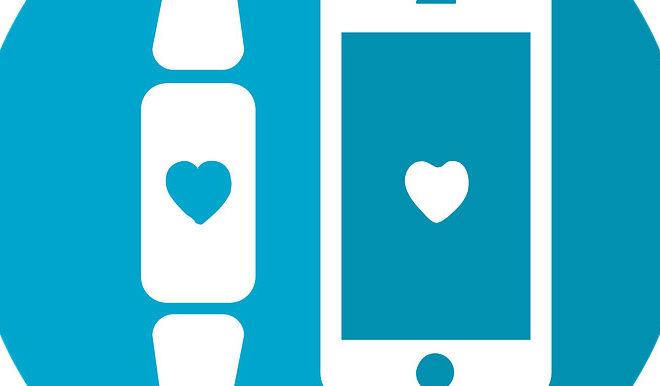How Technology Can Help Hospitals Address Compliance and Regulatory Needs Better
Although health tech startups and enterprises have so much to offer for transforming healthcare, they face challenges in overcoming regulatory hurdles and finding the balance between convenience and compliance.
In today’s digital healthcare era, physicians can be seen torn between their medical practice and their involvement in tech innovation and research. The former reminds them of the stringent and complicated regulations they need to navigate, while the latter pushes them to improve patient safety, the efficiency of healthcare, and so on with the latest tech.
Globalization, increasing customer expectations, alliances and partnerships, and the need for more transparency are driving innovation and technology disruption in healthcare. This is compelling the healthcare organizations to re-examine their approach toward compliances- and steer it in a direction that does not harm the patient experience.
Before learning how technology can help do that, let’s look at the top challenges that compliance and regulatory norms bring along.
Top Healthcare Compliance Challenges
The demand for quality healthcare is growing in the emerging markets, driven by several factors, including a growing and aging population. A report by PwC suggests that a lot of the healthcare infrastructure in these emerging markets is concentrated in the urban areas, while over 50 percent of the population resides in rural communities.
The projected population growth in the span of 2015 to 2050 in India is 46 percent, while in Malaysia it is 50 percent.
Though digital healthcare is rapidly proliferating in these growing markets, there are fundamental gaps in every aspect of IT when it comes to disruption in healthcare.
One of these hurdles is the unstable nature of the political and regulatory environment.
Here are a few compliances and regulatory challenges healthcare organizations face:
- Data Security – Cyberattacks could cost APAC region healthcare organizations $23.3 million this year. The statistic highlights the growing risks of going digital for an industry that is increasingly adopting data analytics and gathering sensitive information from patients to improve care delivery. Ensuring good cyber data hygiene is one of the top regulatory challenges for healthcare organizations of today.
- Complex Compliances– Regulatory pressures increase as new regulations are added, and old ones are updated frequently. Complicated compliances can become hard to keep up with when healthcare systems are integrating, patient volume is booming, reimbursements are shrinking, and the threat of lawsuits and fines is growing.
- Compliance Training– It’s a challenge for healthcare organizations to regularly carry out targeted training for employees to help them stay on top of the changing regulatory landscape. A 2016 report gives a comprehensive picture of the whistleblowing hotline and their effectiveness in EMEA and APAC. The report revealed that less than half of one percent of all employees reported what was captured by their employers. And, a significant reason why employees did not report was the lack of awareness of the prevalent whistleblowing reporting mechanisms.
- Monitoring – Continuous monitoring of patient data, privacy, money exchange, and so on can get overwhelming for healthcare organizations still trying to find their way out from digital transformation. Add to this the need to gain visibility into third-party business associates and continuously monitoring risks from these sources.
In a nutshell, it is hard for healthcare organizations to effectively balance regulatory compliances against innovative efforts that allow them to deliver better care efficiently.
How technology can help solve or minimize these challenges
Healthcare and life sciences companies in the APAC region have high compliance risks and are considered riskiest markets for compliance and regulations. A whopping 62% of healthcare organizations admitted they were least prepared to address regulatory and compliance risks, and 72% said they planned to devote more resources in this area going forward.
Here’s how technology can ease out some of that burden:
- Real-time evaluation of issues– Compliance tools and technologies can support effective risk mitigation through real-time assessment of global and local compliance issues. This can be done by increasing visibility into regulations with the augmented effect of IoT, AI, and analytics.
- Identify risks with analytics– Big Data’s role in compliances is often overlooked, as companies tend to use reports-based historical data. The application of advanced techniques can enable healthcare organizations to identify new and emerging compliance risks proactively- so they can take action and minimize damage.
- RPA to monitor third-party partners– Cognitive computing, connectivity, and new technologies can help change the siloed supply chain processes in healthcare and replace them with digital networks. These networks can monitor the flow of information and increase visibility into the extended supply chain. This is how it gets easier to manage supply chain compliances within the healthcare domain.
- Automating compliance– Many of the healthcare compliance are routine checks which follow a series of repetitive steps. Lending them to an automated software can help you monitor tasks and data flow 24/7, overcoming common and complex challenges of meeting regulatory compliance. Robots can take over any process that is rule-based, digital, and repetitive- all of which are characteristics of compliance and regulations.
A joint study conducted by IDC and Microsoft revealed that healthcare organizations across APAC have improved patient outcomes and prevented diseases by 14 to 21 percent using digital transformation initiatives. Also, healthcare organizations expect to reap more benefits, up to 30 percent by 2020.
These transformation initiatives can become more accelerated and effective when compliances are managed seamlessly.




